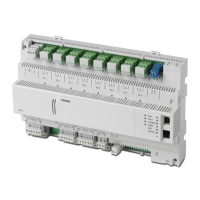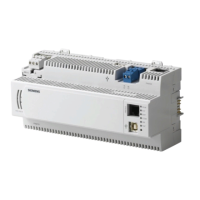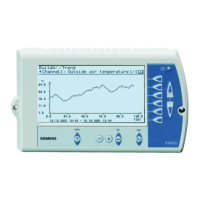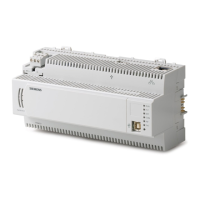Failure to change DEAD alkaline battery will eventually result in battery leakage,
causing permanent damage and loss of building control.
Failure to change a DEAD lithium battery will result in loss of trend and database if
not backed up, causing loss of data or building control.
Establish a preventative maintenance schedule based on expected battery usage and
life cycle.
● The AA battery maintains databases and volatile data, such as Trend, in RAM
when power to the controller is off.
● If reserve power in the AA battery is low, the battery status is reported as LOW or
DEAD and the red LOW BATT LED on the field panel is lit. When this occurs,
replace the battery; do not wait until it goes dead.
● Using PPCL and the $BATT point, the PXC Compact can be programmed to signal
an alarm printer and an operator terminal with a battery replacement message.
Monitoring the State of the AA Battery
● The resident AI point $BATT monitors the state of the AA battery.
– Status is reported as ALIVE for a value of 100.
– Status is reported as DEAD for a value of 0.
● Access BATT from the HMI or PPCL using one of the following:
– “!Field panel
<node>
:BATT” for RS-485 P2 or BACnet MS/TP ALN
–
“!<Node Name>
:BATT” for BACnet/IP or Ethernet TCP/IP (P2) ALN
– “*:BATT” where wildcard is permitted.
– The short name $BATT in PPCL.
For more information, see the APOGEE Powers Process Control Language (PPCL)
User's Manual (125-1896).
Using Auto Restore and Database Backup to Flash
● RAM is cleared if the AA battery is dead, disabled, or missing when power to the
field panel is off. In this case, if Auto Restore and Database Backup to Flash have
been enabled, the database reloads in RAM when power returns; however, Trend
data is lost.
● If a power failure lasts longer than the protection offered by the battery, and Auto
Restore and Database Backup to Flash are not enabled, the information stored in
RAM must be either reloaded from an Insight workstation, Datamate Base or
Datamate Advanced, or entered again by an operator.

